By the time Gabriella Coleman turned 11 months old, her parents had noticed some troubling signs in her development.
She had yet to crawl or scoot or attempt to pull herself up. At that age, her older brother had done all those things.
Rebeca and Michael Coleman, of Byron Center, Michigan, grew concerned.
“Gabby didn’t move around much,” Rebeca said. “She wasn’t active like her older brother.”
Gabby, as her family calls her, was born Nov. 15, 2016.
In October 2017, just before her first birthday, the Colemans took her to Spectrum Health Helen DeVos Children’s Hospital for an MRI and a genetic test.
They wanted to find out what might be impeding her progress.
“I was anxious to hear results, but the genetic tests seemed pretty normal,” Rebeca said. “We did find out that Gabby had mild autism.”
For Rebeca, that raised more questions.
“No one in our family history had autism, so I wanted to know more,” Rebeca said.
As Gabby grew older, Rebeca noticed her daughter had difficulties with language.
“She couldn’t follow two-step directions,” she said. “Such as, ‘Go get your coat and put on your boots.’”
The missing pieces
Under the care of Meghan Behrmann, MD, a specialist in pediatric neurodevelopment at Helen DeVos Children’s Hospital, Gabby benefitted from various therapies. But by August 2020, the Colemans set out to seek more information about the source of their daughter’s health issues.
They met with Spectrum Health genetic counselor Christy Bergeon Burns, who laid out some of their options.
“I help families understand genetic testing,” Bergeon Burns said. “We talk about the child’s medical and family history and then what kind of genetic testing might help us find more answers.
“Sometimes, you get uncertain results,” she said. “And that can be difficult to handle psychologically. It can introduce answers but also more questions.”
The Colemans decided they wanted to seek more extensive genetic testing.
They met with Linda Rossetti, MD, a medical geneticist at the Helen DeVos Children’s Hospital Medical Genetics Program.
“By the time I met Gabby, she was about a year behind in development,” Dr. Rossetti said. “The MRI she had had in 2017 showed some changes in the white matter of her brain.”
“Gabby was having trouble with language skills and was also behind with fine motor skills,” Dr. Rossetti said.
“The autism spectrum can present a wide range of variable symptoms, but in Gabby I could see that she wasn’t interacting with people other than saying hi or bye,” she said. “During our appointment, she was mostly non-verbal and not making eye contact. She spent much of her time watching videos on a phone.”
Rebeca told the doctor that Gabby would often make repetitive actions.
At Dr. Rossetti’s suggestion, the family agreed to pursue additional genetic testing.
Power of knowledge
“We did a gene panel,” Dr. Rossetti said. “We looked for spelling errors within a gene. All genes are encoded by four letters. There can be many different types of spelling mistakes. In Gabby’s case, it was a missing letter. It could also be a duplicated letter, several missing or duplicated letters, or a substitution of one letter by another letter.”
Dr. Rossetti explained to the Colemans that genes are akin to instructions in a cookbook recipe.
Tweaks in the amount of some ingredients, or even a missing ingredient, may not change the final product much—but certain changes can completely alter the dish.
“Like substituting salt for sugar,” she said.
An error in a gene did indeed show up in Gabby’s gene panel.
The panel pointed to a gene called TBR1, or T-Box Brain Transcription Factor 1.
“It was a first for me,” Dr. Rossetti said. “In general, everyone should have two copies of the TBR1 gene. So it’s not so much the gene itself that is rare, but the change in the gene that was found in Gabby is rare.
“TBR1 is just one of the many, many genes involved in early neurodevelopment that have been associated with developmental delay and autism when a spelling mistake occurs. While I see many children with developmental delay and/or autism, it is possible that Gabby will be the only patient I see whose developmental differences are due to a change in the TBR1 gene specifically. ”
Grateful for the ability to connect worldwide with other geneticists and doctors who might have found a similar condition, Dr. Rossetti gathered all the expertise she could about TBR1.
“The tough part about most genetic conditions is that there are no definitive cures,” Dr. Rosetti said. “But we can treat the symptoms and provide therapies so that Gabby can reach her full potential.”
Dr. Rossetti assured Gabby’s parents that they had done nothing wrong to cause the condition.
“It was such a relief to hear that there was an explanation for what we were experiencing,” Rebeca said. “Parents tend to feel guilty whenever something goes wrong with their child. And yes, this did assuage our guilt.
“To finally have an understanding for what Gabby had, it made sense,” Rebeca said. “All the puzzle pieces came together. It described our daughter perfectly. We could focus now on what we can do to help Gabby.”
Armed with answers
The Colemans felt empowered to help their daughter reach her full potential.
“Our goal is to help Gabby grow up to be a functional adult, not to cap her potential,” Rebeca said.
The Colemans signed Gabby up for speech therapy, occupational therapy, applied behavioral analysis therapy and therapies to manage her autism.
Gabby and her parents had a telehealth session with Dr. Rossetti in January 2021 for an update.
“I could see Gabby was making progress,” Dr. Rossetti said.
The doctor explained to the Colemans how the brain is malleable when a person is young.
It can be shaped.
“She told us to keep doing what we were doing,” Rebeca said. “Gabby can now identify two items in a picture and she can follow two-step directions most of the time. She especially loves occupational therapy and structured play time.”
When the family takes walks together in their neighborhood, a sunny Gabby calls out “Hi!” to everyone as they pass. She remembers the names of all the neighborhood dogs.
“I might have been a nuisance when we were trying to understand what was happening to Gabby,” Rebeca smiled. “But that’s my advice to other parents.
“You’re the mama and there is power in that,” she said. “Don’t stop asking questions. Getting answers through genetic testing has allowed us to help Gabby thrive.”
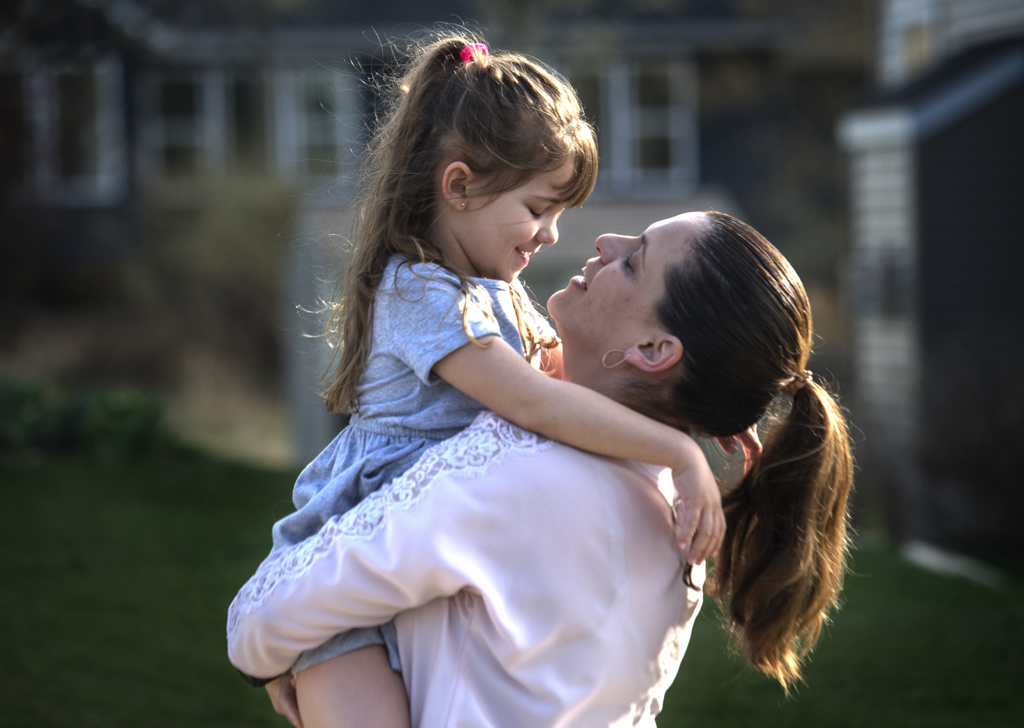

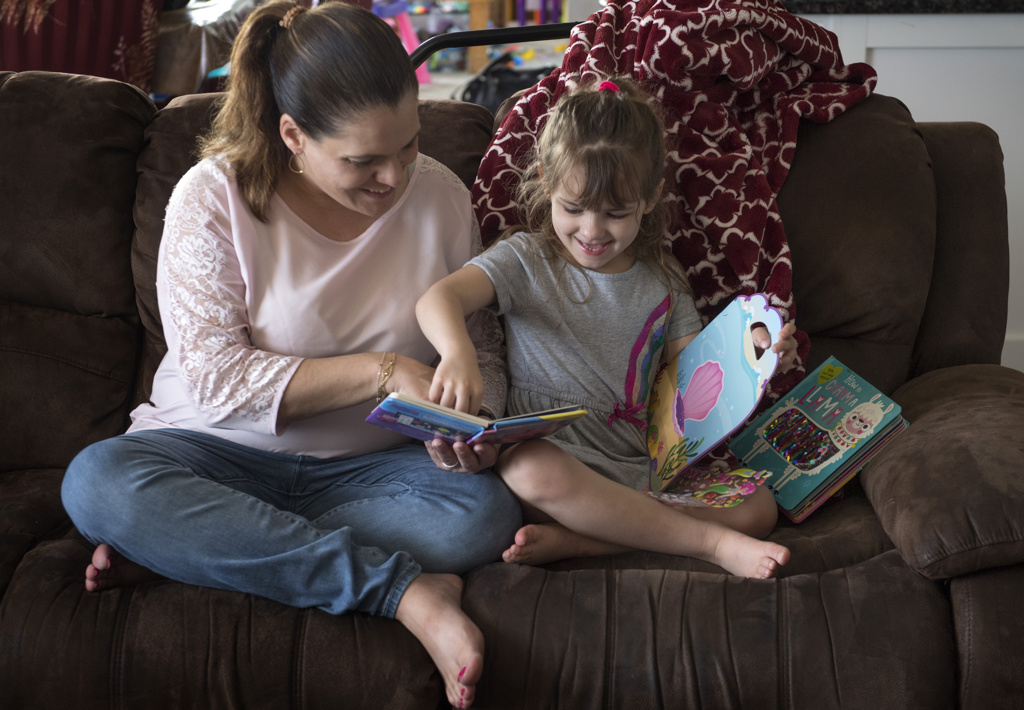




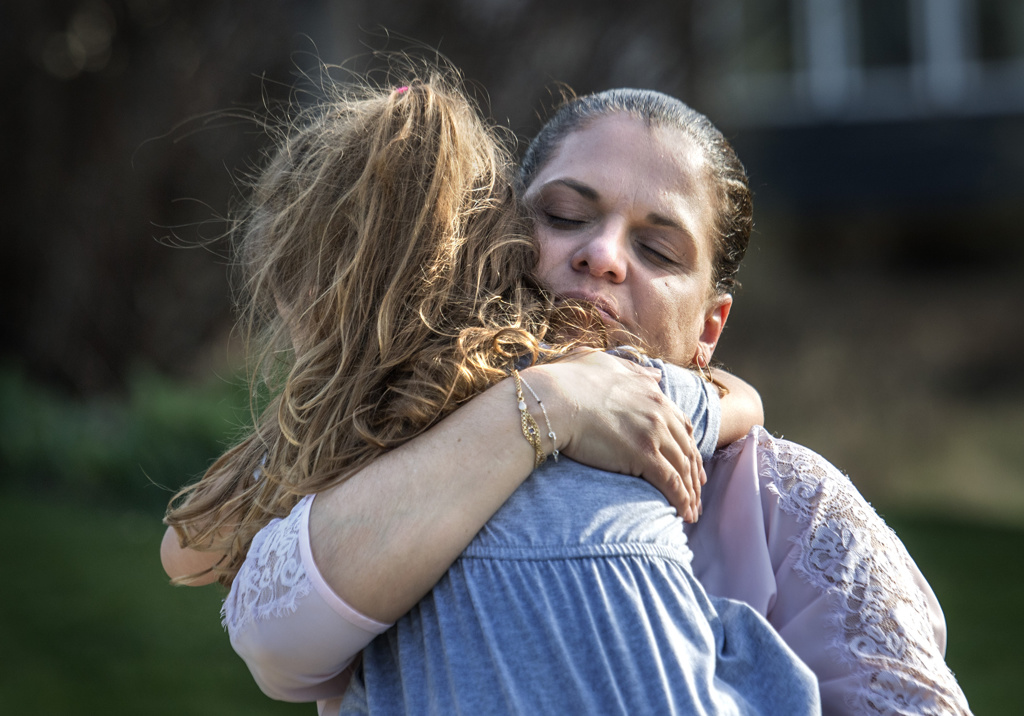

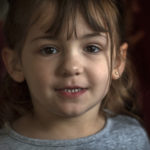







 /a>
/a>
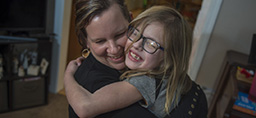 /a>
/a>
 /a>
/a>